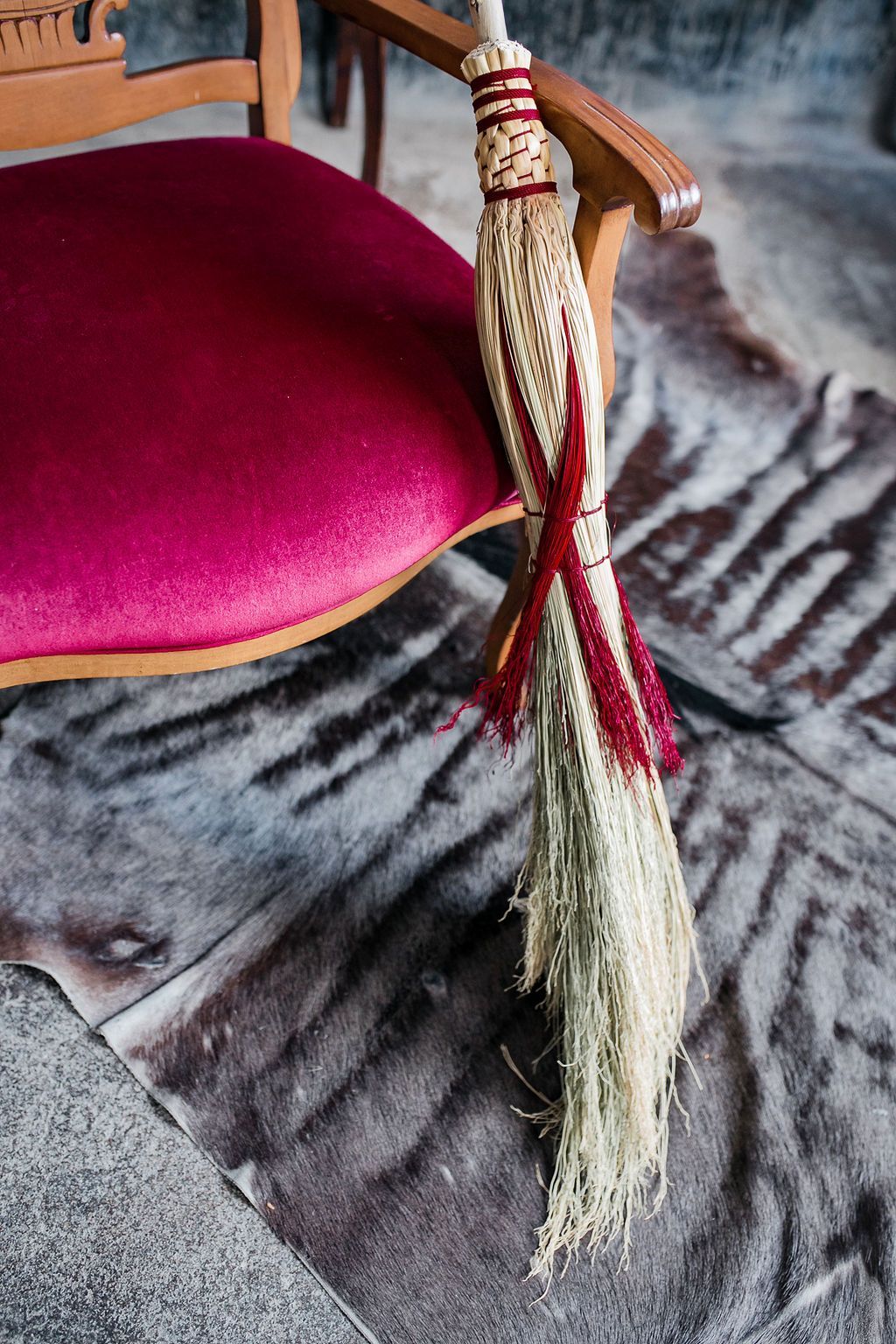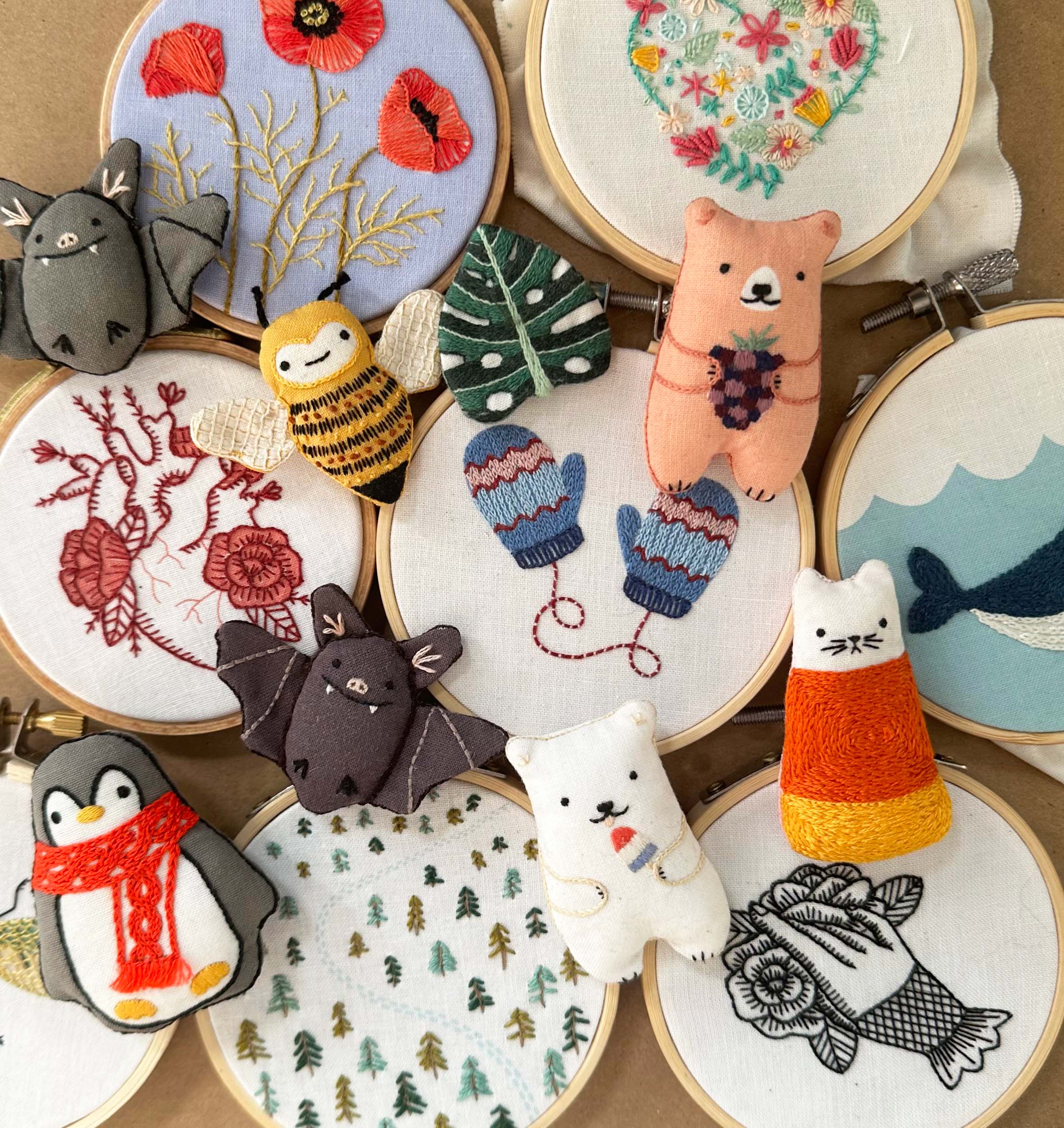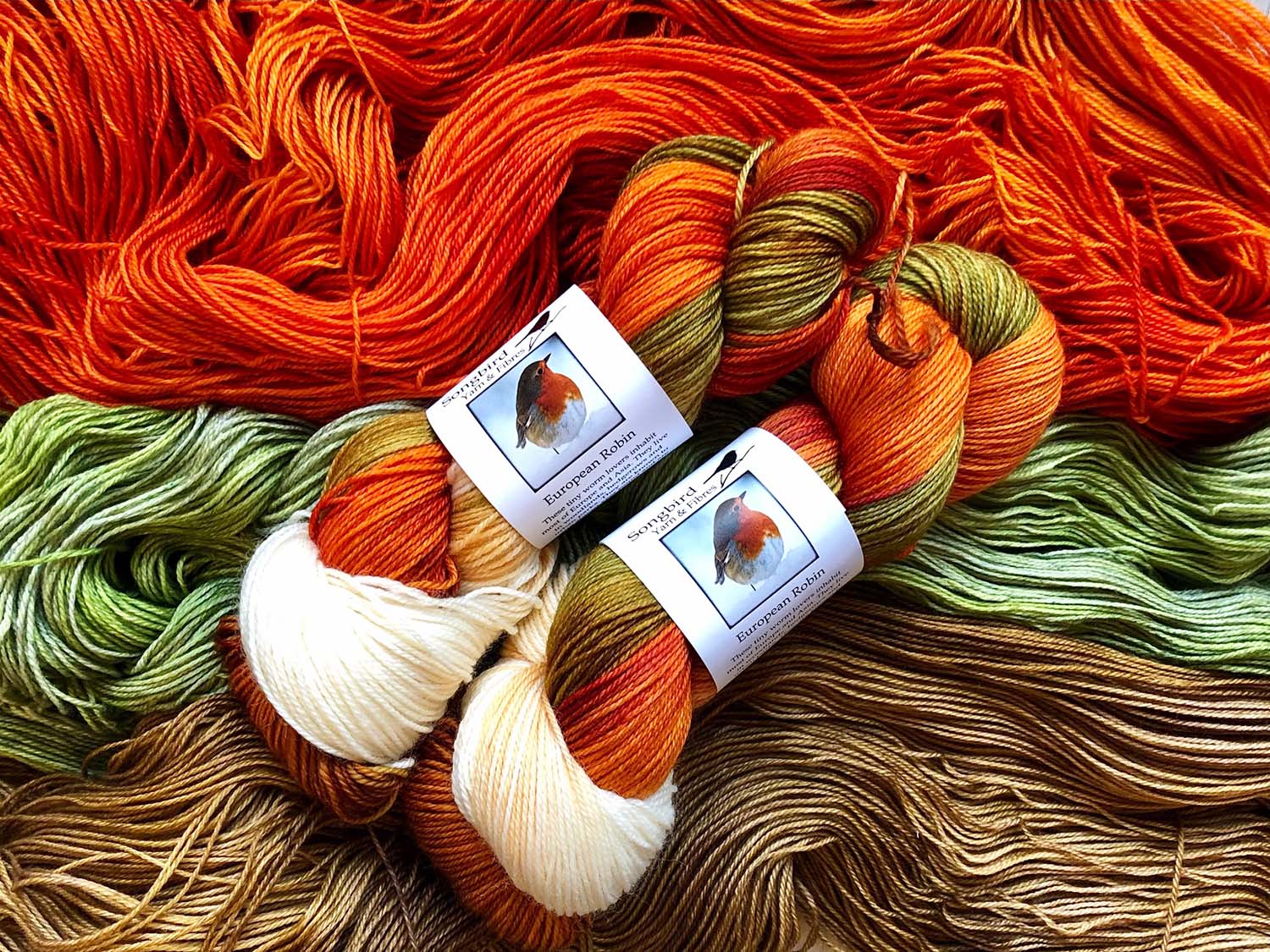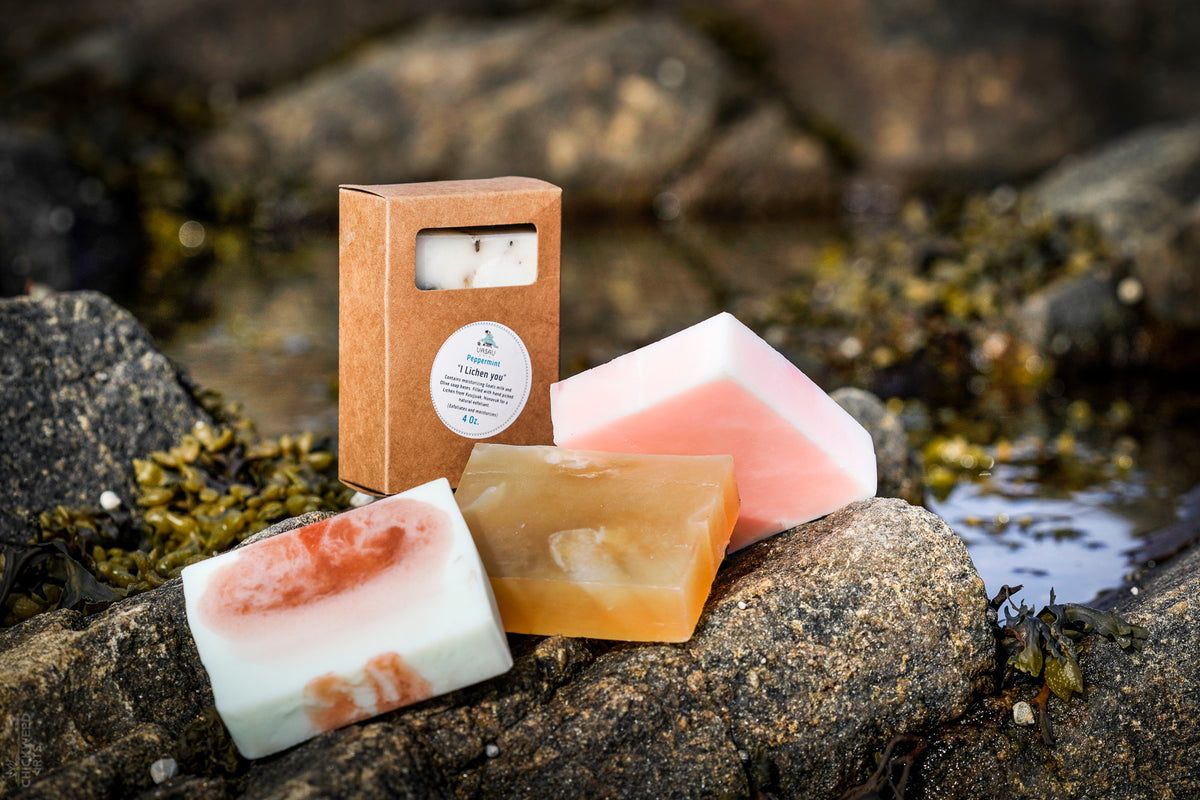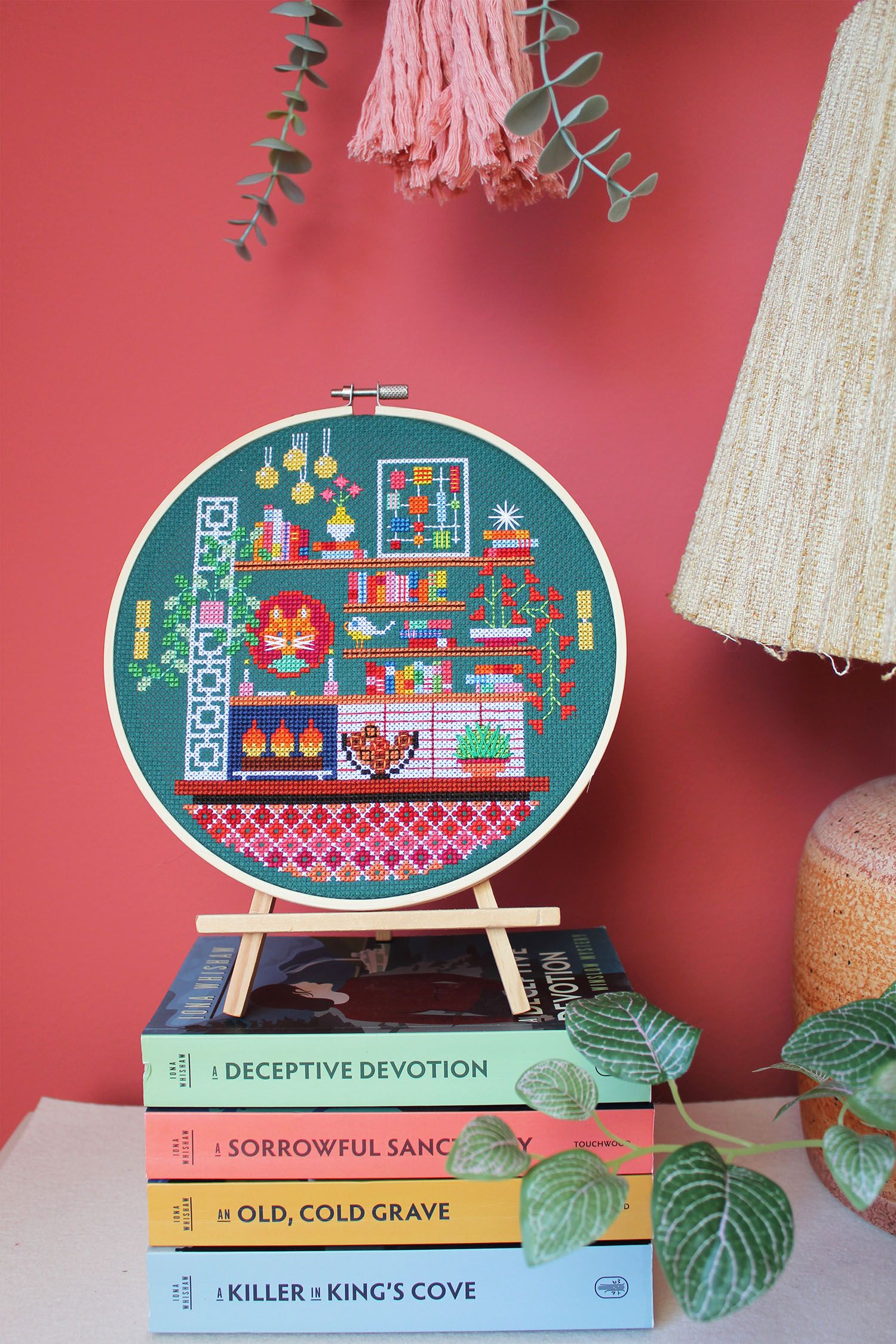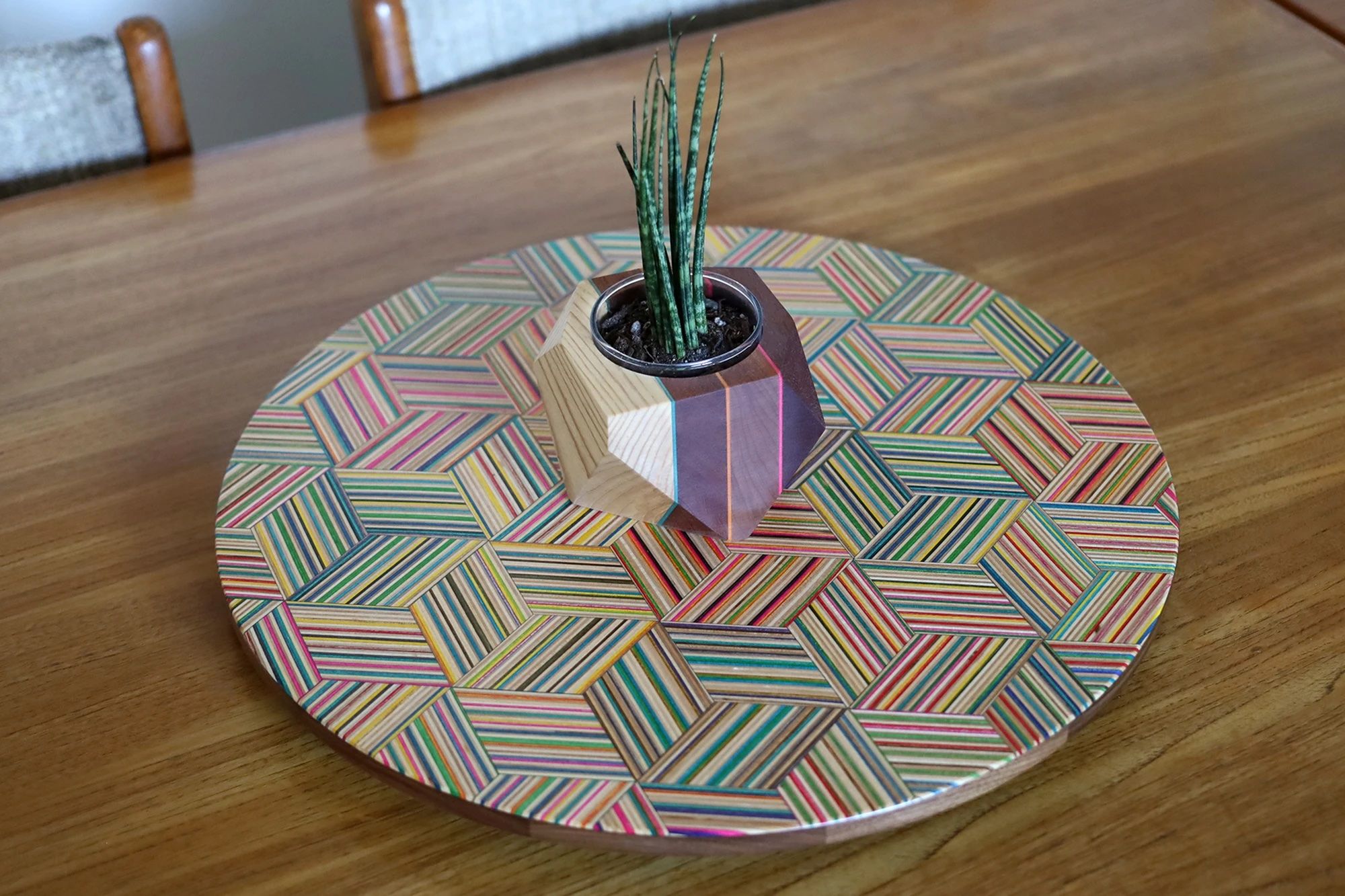A broom is a broom is a broom, right? No, not when you’re talking about Amina Haswell’s expertly crafted handmade creations. Veritable art pieces, the sweepers, whisks and brushes that Haswell makes for her Prairie Breeze Folk Arts Studio follow a long tradition of broomcrafting. Showcasing the beauty of folk art techniques, Haswell brings a high-fashion, modern take and business acumen to the craft.
We talked to Haswell about how she got started in business and how her latest Halloween collection came to be.
Editor's note: While all products and services we feature in this story are independently selected, some items use affiliate links. This means that if you click these links and make a purchase, we may earn a commission. You can find out more in our privacy policy.
(Interview has been edited for length and clarity.)
Workshop: How did how did your business get started? How did you get into broom making?
Amina Haswell: A lot of people think overnight I just popped up and decided to make brooms. No. It’s been 12 years in the making. I used to work for Boeing, the aviation company, and I covered all of Canada and Latin America, which meant I travelled a lot. I spent a few weeks in Vancouver and spent time on Granville Island [a tourist area that’s host to many artists and crafters]. There was a wonderful little broom company there that has been pumping out brooms, I think, for two generations. I bought my first broom and I became fascinated with that broom, that very special broom. I went back and I bought another broom. And then I started just watching outside the business and seeing all these tourists coming and buying brooms and I said, I would bet this is a million-dollar business, making brooms.
I've always been a business owner — I have my MBA and I’m also very creative. So when I saw these brooms, I became infatuated, and then went to Toronto and saw Japanese-style brooms and was like, jeez, this broom thing. I never paid attention to this item before and now I'm seeing it everywhere because I'm looking for it.
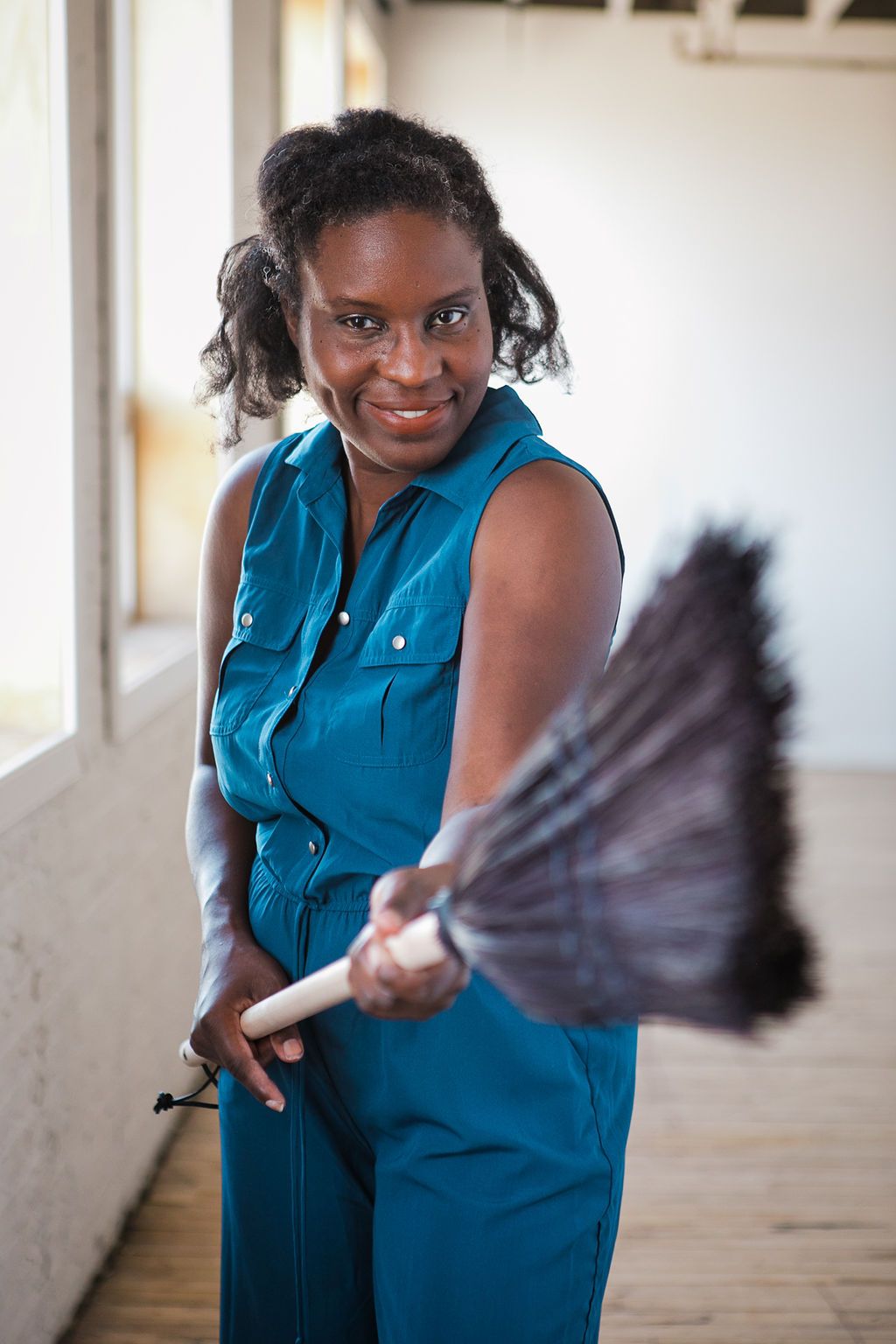
I finally decided: I love the corporate world but I'm not happy. I’d like to be my own boss. It's time to pull the trigger. So I took one class in Minneapolis four or five years ago, which gave me some foundation for making some of my smaller brooms, and then I said, I'm going to broom university.
There’s a folk art school in Kentucky and they teach immersed broom craziness — you're in there and you're making brooms every day and learning from the masters and honing your craft.
That set the wheels in motion. I started my business just before maternity leave and then everything came together. I saw something that would allow me to meld both my creative and my business sides and I've built upon it over the last two and a half years since.
W: So you went to broom university and then you set up shop. Did you start a website? What was that process?
AH: Our first gig was going to be at the Winnipeg Folk Festival — it was supposed to be this massive event. And then it got cancelled [due to the COVID-19 pandemic]. I wasn't even ready yet to build out a website and do all of that. [The festival] still wanted to promote the businesses that were going to be in the festival village so I went to Google 101 and in a night or two set up a website and a week or two later got social media going.
So we set this all up and then there were no sales. I said, I've got to jump-start this somehow. Knowing that it was a difficult year for new parents — I was a new parent myself, with my second child — I said, I'm going to take a bunch of products and give them to the women on my street. I gave away our pot scrubbers and little whisks and a couple of smaller items to about 25 people. That was the catalyst; we got our first big order from that. That little act of kindness is what I say started the business. We've been going strong ever since.
People really appreciated it and it resonated with them. We did 25 to 30 homes [on my street]. We didn't even have branded cards, just a handwritten card saying: We know it's been a tough year. We thought you deserved a little something. And a link to the website.
W: What was the first product you were making?
AH: We started off with something like 20 products. I treat broom-making like I'm running a fashion house. I do minimum two collections a year. We had two drops: our Pyramid and our Sahara collections.
The thing I love about brooms is, it's such a simple item, but it is so versatile in how you transform it. There are a lot of old masters who aren't thinking about placing this beautiful item in beautiful homes. And that's my thought: I want to place it in beautiful homes around the world. I've taken a lot of the rustic elements and refined them so they’re aesthetically a much more fluid and versatile product for the modern home.
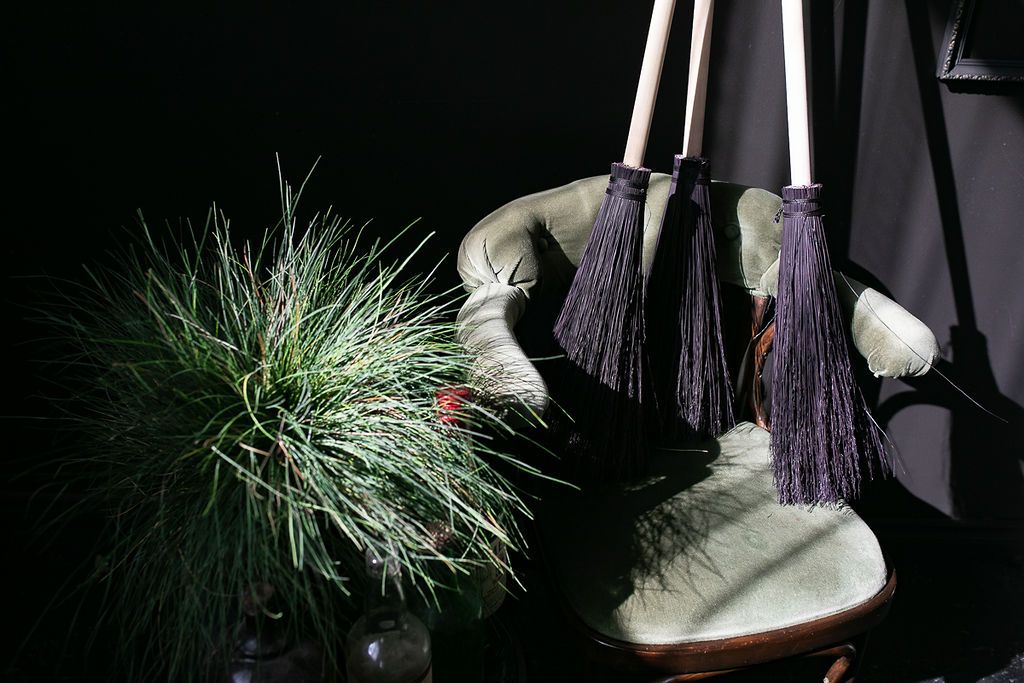
I try and make our products production worthy. A lot of broom makers are low-production, doing custom orders. And while we do custom orders, we're a high-volume broom shop, with the same quality and standards. Sometimes I get carried away with a collection and realize, this broom is not production worthy, it has a lot of elements to it. When we crunch the numbers, we look at what [price] we need to get a profit from it. It's like, who's going to want to buy a broom for $700? Nobody.
The average artisanal broom — a full sweeper — is $250 and up. But I'm not a wealthy person — I’m middle or upper middle class — so I want to make sure that our brooms are affordable. I want a broom that can get into every home. I know that some people don't think that an $85 broom is warranted, but it's a broom that lasts you 45 to 50 years. An $85 broom can be a conversation piece, but also a functional element in the home.
W: Let's talk about your most recent Halloween collection.
AH: I happened to be thinking about what were we doing for Halloween as a family. Last year we watched movies and had doughnuts. This year [I was thinking] my older son might appreciate some of the Tim Burton stuff and I was like: Oh yeah, Tim Burton is awesome. Then I started thinking about Beetlejuice and Alice in Wonderland and Edward Scissorhands, and all these amazing movies. I really like Burton and there's so much to play off. He has a very distinct style. That's how I ended up with the Oogie Boogie (Boogie Man) Sweeper, the Mad Hatter Sweeper, the Harlequin and the Beetlejuice Cobweb. I was just thinking, what would Burton do?
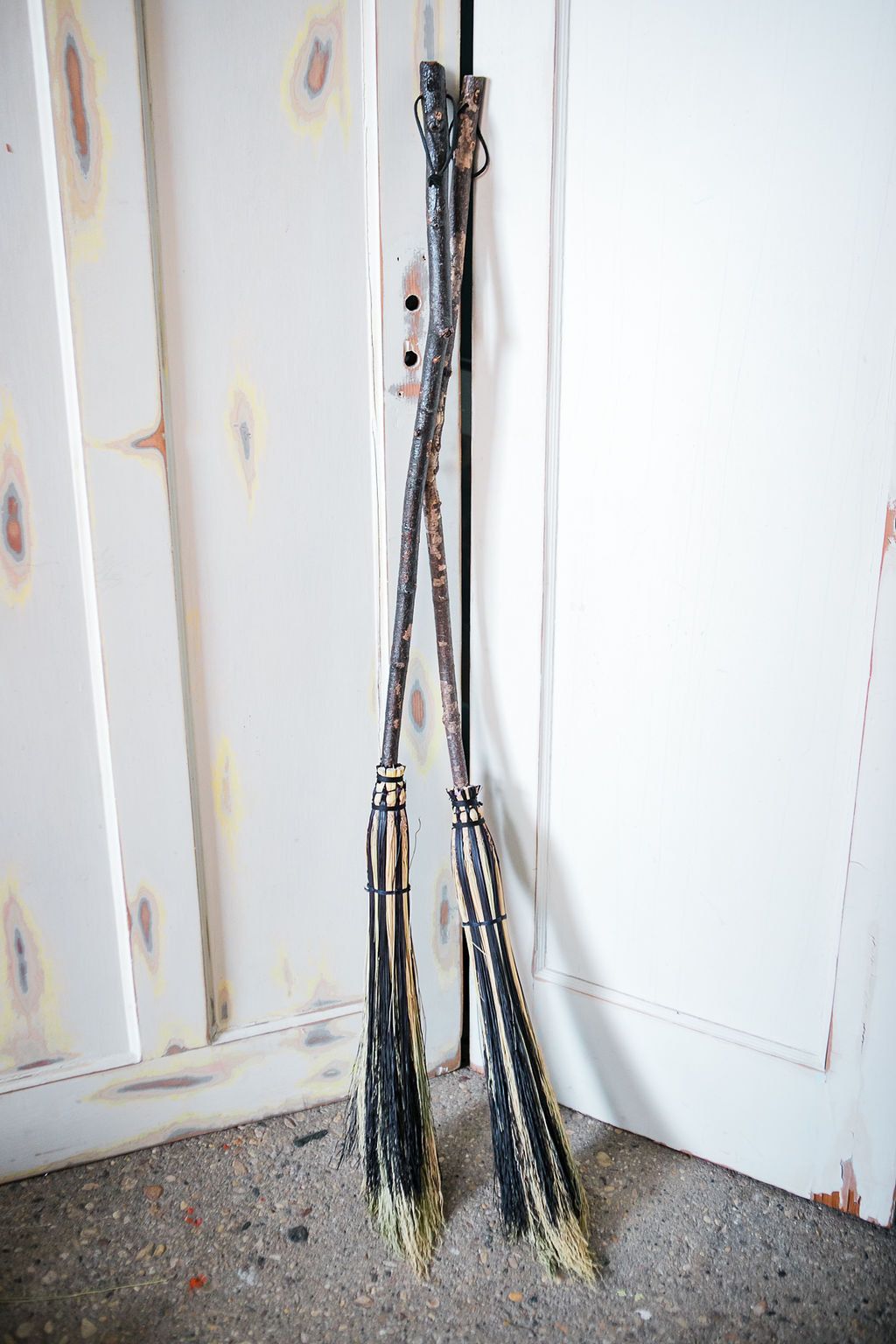
The Beetlejuice one is probably one of my favourites. It uses materials that lots of broom makers have, but I've never seen any other broom maker put them together in this way.
I'm coming off of an injury, so I thought I wasn’t going to put out a [Halloween] collection. Then I got into the studio and started playing and I was having a good day. I was having fun and thinking about the movies and my son, Reese, was helping me. I should give him some credit because he's the one who said, “Remember that Halloween movie we watched?” It was The Nightmare Before Christmas and he started going into the characters.
I thought about some other brooms [for this collection] — creativity is boundless, which is wonderful. But you can't pump out 700 brooms every collection. I could be making a million different types of brooms, in really different styles. I have to limit myself because I also need to make sure that the products I put out there are commercially viable, production viable and also on theme for the collection.
W: How does your production process work?
AH: I start off with one sample and play with it for a little bit. Really inspect it. Is this easy to do? Can I reproduce it? I take photos and then once I approve it for a collection, I’ll spend a day making 20 of one type and 20 of another type and build up inventory so that it can support orders coming in.
We do some testing. A lot of our products are variations of our existing Artisan collection, which is our tried-and-tested, rock-solid, not-falling-apart-for-40-years collection. As long as we stay true to the fundamentals of our binding process and the materials, we’re confident that those brooms will last the long haul.
We have a lifetime guarantee on all of our mid- and large-size brooms. Anything happens to it, we say send it back, we'll get you a new one. We know the base process of the binding and plating works. And I've refined my process to enhance the durability and longevity of the product. And I give them to my two-year-old and say, Have at her!
W: How has the reception been for your Halloween collection so far?
AH: It’s was released about the 4th of October and the reception has been fabulous. We've had folks from HGTV contact us, other magazines, radio. We had purchases the next day, including four large orders of almost every piece in the collection for one order. People who have received theirs, love it. It's so on point.
Partnering with a photographer was key. In March, we started working with photographers in Winnipeg here and that has made the world of difference in terms of getting these really clean, crisp product photos that resonate.
The last hurdle we have to conquer is getting more pictures in true homes. We're hoping that this spring, we’ll take some pictures of our products in model homes, so people can see brooms in the environment. So they don't just see it as cool object to hang somewhere but see it as a cool object to own in your home and use.
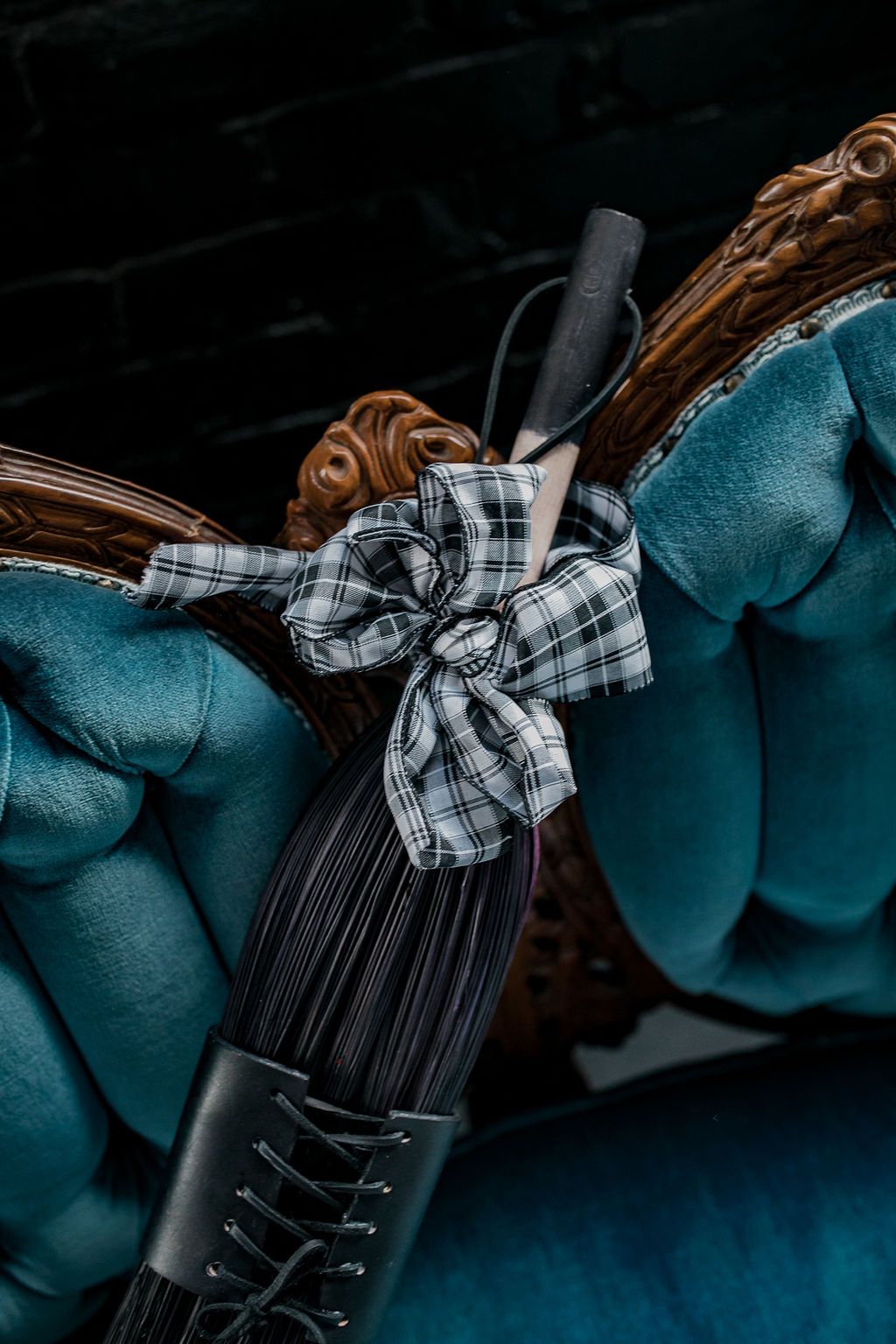
W: Did you market your Halloween collection to your existing audience or a new audience?
AH: It's always a combination. No one really needs 10 brooms, but some people like 10 brooms. (Obviously my house has got 80-plus brooms.) I find that because we're coming up with innovative ways to look at the product every season, people who have purchased from us before are still keen on purchasing a different one, or getting a complete set in a different colour, or purchasing it as a present. We find that we can still effectively market to our existing clientele.
And then we also do quite a bit of marketing. We started magazine ad campaigns and newspaper ads so we've tried to bring in new business as well. And then Pinterest and Facebook and TikTok to just reach a farther audience.
W: Was there anything that surprised you?
AH: I thought people would be super keen on the dark, moody pictures of the brooms, but the data reports show me that everybody loved the cartoon character of me. We've got a number of ads running right now with a character of me dressed up as Sally [from Nightmare before Christmas], named “Baroness von Broom.” It’s garnered way more attention than the moody pictures.
We came up with this character to do a quick snippet of what we hope to be a series: where do brooms come from. We’ve got a video on our social media and on our website of this character going through a cornfield and showing the variety of corn that's used to make brooms and educating people about natural handmade brooms. We’re going to carry that character through and make it part of our brand. We’ve got our Christmas outfit picked out. We’re trying to incorporate that into educational videos. A lot of people don't know that our brooms are used for different things. A Beetlejuice cob-webber is for reaching ceilings, and it’s great on baseboards because it's got a thinner, more narrower end for cleaning dust. Versus our sweeper like the Mad Hatter or Boogie Man, which is great for sweeping hardwood that has cracks. So really take it to the next level and educate people while having fun and doing it with unique-looking products.
You can't lose sight between wanting to do something that you're passionate about and love, and also trying to make it a viable, productive business.
W: Any advice for other makers?
AH: Initially, I didn't think about the profitability and the numbers until we did a deep dive and looked at every item and said: Okay, this is your cost. This is what we need to cover overhead, light, electricity, pay an employee. You can't lose sight between wanting to do something that you're passionate about and love, and also trying to make it a viable, productive business. You have to have that balance.
W: What's next?
AH: We want to have a physical space where people can see our product, where we can showcase the rows and rows of brooms that we have. We partnered with a blacksmith who’s making us gorgeous custom racks for displaying our brooms. We're super excited.
I’m also thinking: how can we foster not only our market but also a bigger broom community? Having a physical site and being able to do workshops will allow us to do it.
Right now we've got two studios, but they're not [for the public]. When you make brooms, it is the messiest job — you have to use the product in order to make the product, because it's that messy. When we did open our studio up for in-person classes, I was finding I couldn’t go all-out on an eight-hour day of production, and then have to do a class. I'm the type of person who wants my space to be meticulously clean and organized [for visitors] and it was just getting too disruptive. We don't do in-person studio appointments anymore. I’m super excited to be able to show people walls of broom collection after broom collection. The building is up, and now I just have to add all the pretty walls and finishing touches.
Thanks to Amina Haswell for taking the time to speak with us, and for use of her photos. You can see more of her products and her work on the Prairie Breeze Folk Arts Studio website and on Instagram.
Who should we speak with next? Let us know in the comments!

